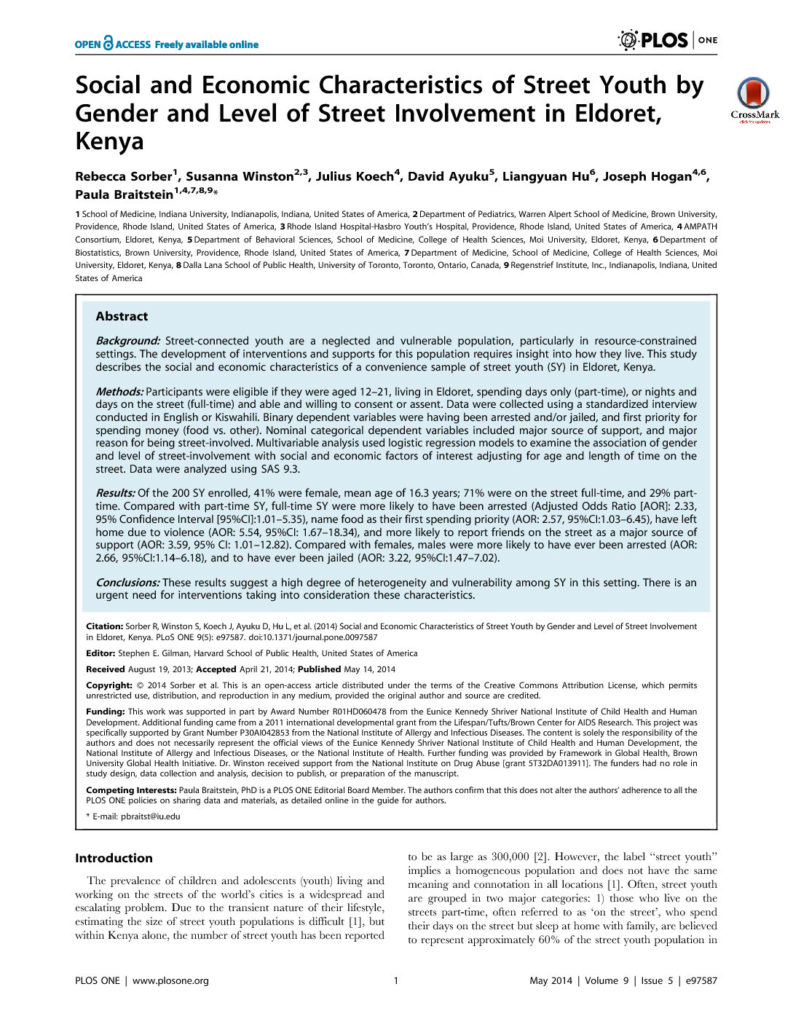
Social and Economic Characteristics of Street Youth by Gender and Level of Street Involvement in Eldoret, Kenya
Summary
This open access article is published in the journal PLoS ONE and is distributed under the terms of the Creative Commons Attribution License.
Street-connected youth are a neglected and vulnerable population, particularly in resource-constrained settings. The development of interventions and supports for this population requires insight into how they live. This study describes the social and economic characteristics of a convenience sample of street youth (SY) in Eldoret, Kenya.
Participants were eligible if they were aged 12–21, living in Eldoret, spending days only (part-time), or nights and days on the street (full-time) and able and willing to consent or assent. Data were collected using a standardized interview conducted in English or Kiswahili. Binary dependent variables were having been arrested and/or jailed, and first priority for spending money (food vs. other). Nominal categorical dependent variables included major source of support, and major reason for being street-involved. Multivariable analysis used logistic regression models to examine the association of gender and level of street-involvement with social and economic factors of interest adjusting for age and length of time on the street. Data were analyzed using SAS 9.3.
Of the 200 SY enrolled, 41% were female, mean age of 16.3 years; 71% were on the street full-time, and 29% part-time. Compared with part-time SY, full-time SY were more likely to have been arrested (Adjusted Odds Ratio [AOR]: 2.33, 95% Confidence Interval [95%CI]:1.01–5.35), name food as their first spending priority (AOR: 2.57, 95%CI:1.03–6.45), have left home due to violence (AOR: 5.54, 95%CI: 1.67–18.34), and more likely to report friends on the street as a major source of support (AOR: 3.59, 95% CI: 1.01–12.82). Compared with females, males were more likely to have ever been arrested (AOR: 2.66, 95%CI:1.14–6.18), and to have ever been jailed (AOR: 3.22, 95%CI:1.47–7.02).
These results suggest a high degree of heterogeneity and vulnerability among SY in this setting. There is an urgent need for interventions taking into consideration these characteristics.
Discussion
Users can discuss this report and make suggestions for future updates. You must be signed in to submit a comment.
No comments
Join the conversation and
Become a Member Existing member loginbecome a member.